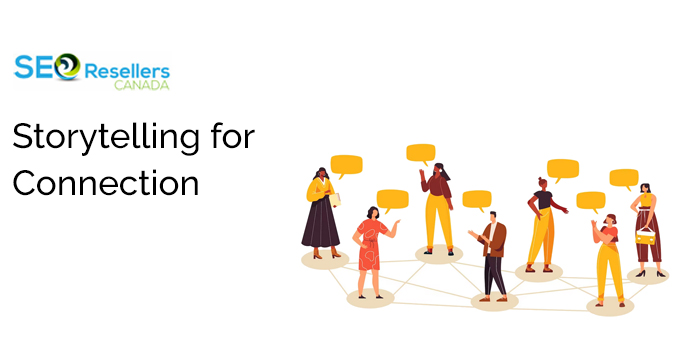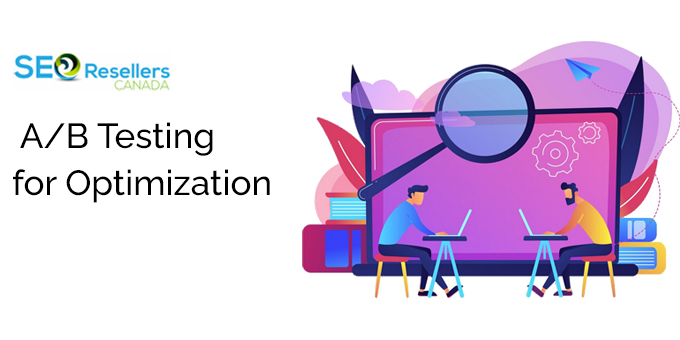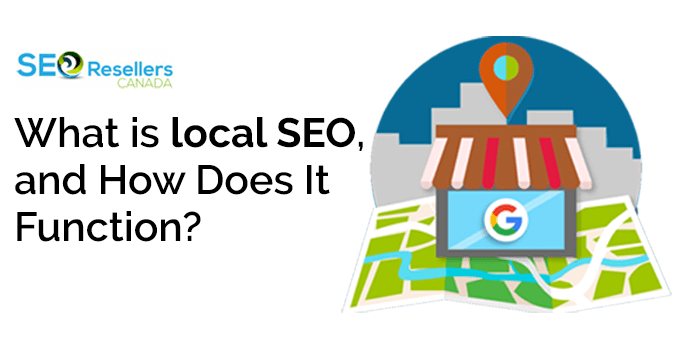People want content that speaks directly to their needs, desires, and aspirations. They crave more than just words on a screen; they seek connection and value. To satisfy these cravings and unlock the full potential of content marketing, you need to master the art of creating content that both engages and converts.
Consider this statistic: “Content marketing by a digital marketing agency develops three times as many leads as other marketing and costs 62% less,” as revealed by the Search Engine Journal. It’s clear that content holds immense potential, but only if it’s wielded with precision.
Imagine crafting a blog post, an email, or a social media update that doesn’t just attract attention but compels readers to take action. That is the power of engaging content by Victoria SEO Company that converts. As the digital world drowns users with an avalanche of information, the real challenge isn’t just getting noticed; it’s making a lasting impact. Content builds relationships. Relationships are built on trust. Trust drives revenue.
This comprehensive guide is your ticket to mastering that art. From understanding your audience and crafting compelling headlines to leveraging storytelling and data-driven insights, these eight sections will equip you with the tools and techniques to rule the realm of content marketing.
1- Crafting Captivating Headlines and Introductions

Think of a headline as the “first impression” of your content. It’s the gatekeeper that determines whether your audience will invest their precious time in reading further. A compelling headline accomplishes several crucial tasks:
- Grabs Attention: In a sea of content, a magnetic headline stands out and compels the reader to click.
- Conveys Value: It provides a sneak peek into what the content offers, making the reader anticipate what they’ll gain.
- Sets Expectations: A well-crafted headline by a content writing agency sets the stage for what’s to come, ensuring alignment between the reader’s expectations and the content.
1.1- Strategies for Writing Compelling Headlines
Creating headlines that captivate isn’t an art reserved for a select few; it’s a skill that can be honed. Here are strategies to help you craft headlines that command attention:
1. Use Action-Oriented Words: Employ verbs and action words that convey movement, excitement, or urgency. For example, “Unlock,” “Discover,” or “Master.”
2. Be Specific: Provide a clear and specific benefit or promise. Vague headlines often fail to engage. For instance, “10 Proven Tips” is more compelling than “Some Tips.”
3. Invoke Curiosity: Pique the reader’s curiosity by asking a question or hinting at a mystery. “Are You Making These Content Mistakes?” is intriguing.
4. Highlight Benefits: Focus on what the reader stands to gain. Whether it’s saving time, gaining knowledge, or solving a problem, convey the benefits upfront.
5. Use Numbers: Numerical headlines tend to perform well because they offer a clear structure and promise specific takeaways. “5 Strategies for…” or “Top 10 Ways to…”
1.2- The Power of Intriguing Introductions
Once you’ve lured readers in with your headline, your introduction should seize their attention and maintain the momentum. An effective introduction:
- Reinforces the Headline: It should seamlessly transition from the headline, reinforcing the value proposition and piquing curiosity.
- Establishes Relevance: Quickly make it clear why the content matters to the reader and how it addresses their needs or interests.
- Engages Emotionally: Storytelling, anecdotes, or relatable scenarios can evoke emotions and connect with readers on a personal level.
- Promise Value: Explicitly state what the reader can expect to gain by continuing to read. Make it clear that their time will be well invested.
2- Storytelling for Connection

Storytelling isn’t just for novels and movies; it’s a powerful tool in content creation. Stories have captivated audiences for centuries, and for a good reason—they entertain and create a memorable experience. Here’s why storytelling matters:
- Emotional Connection: Stories evoke emotions, making readers feel connected to the content on a personal level.
- Retention: People remember stories much better than raw information. A well-told story can leave a lasting impression.
- Relatability: Stories often feature relatable characters or situations, allowing readers to see themselves in the narrative.
2.1- Examples of Effective Brand Storytelling
Many successful brands incorporate storytelling into their content to connect with their audience. For example:
- Nike: Nike’s “Just Do It” campaign features stories of athletes overcoming challenges and achieving greatness, inspiring their audience to pursue their goals.
- Coca-Cola: Coca-Cola often tells heartwarming stories in its advertising campaigns, promoting values like unity and happiness.
- Apple: Apple’s product launches often take on the form of storytelling, highlighting the user experience and the journey of innovation.
Key Takeaway: Storytelling isn’t reserved for major brands; it’s a technique that any content creator can leverage to create engaging and memorable content.
3- Utilizing Visual Content

Visual content, including images, videos, infographics, and more, is a potent tool for capturing and sustaining audience engagement. Visuals offer several advantages:
- Immediate Appeal: Visuals grab attention quickly, making readers more likely to stop and explore your content.
- Enhanced Comprehension: Visuals can simplify complex information so that your people can easily understand and retain it.
- Emotional Connection: Well-chosen visuals can evoke emotions, strengthening the reader’s connection to your content.
- Increased Shareability: Visual content is often more shareable on social media platforms, broadening your content’s reach.
3.1- Incorporating Images, Videos, and Infographics
To effectively utilize visual content, consider these strategies:
1. Images: Include high-quality images that enhance your content. Whether it’s product photos, illustrations, or relevant stock images, visuals break up text and make it more visually appealing.
2. Videos: Video content has gained immense popularity. Consider creating explainer videos, tutorials, or even behind-the-scenes glimpses to engage your audience.
3. Custom Graphics: Creating custom visuals that align with your brand’s identity can set your content apart and make it more memorable.
4. User-Generated Content: Encourage your consumers to create and share visual content related to your brand. User-generated content can boost engagement and authenticity.
5. Visual Storytelling: Use visuals to complement your storytelling. Show, don’t just tell, to create a richer narrative.
Key Takeaway: Remember that visuals should complement your written content and enhance the reader’s experience. Overloading your content with visuals can be distracting, so strike a balance.
4- Keeping Content Clear and Concise

4.1- The Importance of Clarity in Communication
Clear and concise content is not just about brevity; it’s about ensuring that your message is easily understood. This is crucial for engagement and conversion because readers are more likely to act when they clearly grasp your message. Here’s why clarity matters:
- Reduced Misunderstanding: Clear content minimizes the risk of readers misinterpreting your message or intent.
- Enhanced Experience: Easy-to-digest content ensures a positive user experience, increasing the chances of readers staying engaged.
- Improved Conversion Rates: When your content is clear, readers are more likely to take the desired action.
4.2- Avoiding Jargon and Complexity
To keep your content clear and accessible:
- Avoid Jargon: Steer clear of industry-specific jargon that may alienate readers who aren’t familiar with it.
- Simplify Language: Use straightforward and plain language. Aim for clarity rather than complexity.
- Break Down Complex Ideas: If you need to explain complex concepts, use analogies, examples, and visuals to make them more understandable.
- Edit Ruthlessly: Review your content with a critical eye, eliminating unnecessary words and sentences that don’t add value.
- Organize Information: Structure your content logically, using headings, subheadings, and bullet points for easier skimming and comprehension.
5- Encouraging Engagement and Interaction

5.1- Strategies to Prompt Reader Engagement
Engaging your audience goes beyond providing information; it’s about creating a dialogue and fostering a sense of community. Here are strategies as reported by a content writing agency to encourage engagement:
1. Ask Questions: Pose questions to your readers within your content. Encourage them to share their thoughts in the comments section.
2. Run Polls and Surveys: Gather opinions and feedback through interactive polls and surveys.
3. Contests and Giveaways: Organize contests or giveaways that require participation. This can boost engagement and create a buzz around your content.
4. Respond Promptly: When readers comment or engage with your content, respond promptly to acknowledge their contributions and encourage further interaction.
5. Encourage Sharing: Include social sharing buttons to share your content with other networks.
6- Incorporating Calls-to-Action (CTAs)

6.1- The Role of CTAs in Guiding Readers Towards Action
A well-crafted CTA is a compass that guides your readers toward the action you want them to take, whether just signing up or sharing your content. CTAs serve several critical functions:
- Directing Attention: CTAs stand out from the rest of your content, capturing the reader’s attention.
- Clarifying Intent: They leave no room for ambiguity, clearly stating what action you expect from the reader.
- Creating a Sense of Urgency: Effective CTAs often include elements that create a sense of urgency, encouraging immediate action.
- Measuring Success: CTAs provide a measurable way to track the success of your content and conversion rates.
6.2- Crafting Persuasive CTAs
Creating compelling CTAs is both an art and a science. Here are strategies to craft persuasive CTAs that encourage action:
1. Be Specific: Use clear and specific language. Instead of a vague “Click Here,” use phrases like “Download Your Free E-book” or “Get Started Now.”
2. Create Urgency: Encourage immediate action by incorporating words like “limited time,” “today,” or “act now.”
3. Use Action Verbs: Start your CTA with a strong action verb that conveys what the reader should do, such as “Buy,” “Subscribe,” or “Join.”
4. Highlight Benefits: Explain what the reader will gain by taking action. For example, “Unlock Exclusive Discounts” or “Start Saving Today.”
5. Keep it Concise: CTAs should be concise and to the point. Avoid lengthy explanations or too many details.
6. Design Matters: Make sure your CTA stands out visually with contrasting colors, buttons, or graphics.
6.3- Placing CTAs Strategically Within Content
The placement of CTAs within your content can significantly impact conversion rates. Here are some strategic locations for CTAs:
- Above the Fold: A CTA placed near the top of your content ensures that it’s one of the first elements readers see.
- Within Content: Incorporate CTAs naturally within the content, especially after sections that highlight the value of the action.
- At the End: Finish your content with a strong CTA, summarizing the key benefits and urging action.
- Popup CTAs: Consider using popup CTAs for additional offers or to capture emails for newsletters.
7- Leveraging Social Proof and Testimonials

7.1- How Social Proof Influences Trust and Conversions
Social proof is a powerful tool that makes people tend to follow the actions of others when making decisions. When potential customers see that others have had amazing experiences with your products or services, it builds trust and confidence. Here’s why social proof is crucial:
- Trust Building: Social proof signals that your offerings are trustworthy and have been validated by others.
- Reducing Risk: It reduces the perceived risk of trying something new because others have already done so successfully.
7.2- Showcasing Customer Testimonials and Reviews
To leverage social proof effectively:
- Customer Testimonials: Gather reviews from satisfied customers and prominently display them on your content or product pages.
- Case Studies: Showcase detailed case studies that illustrate how your product or service solved specific customer problems.
- Ratings and Reviews: If applicable, include star ratings and reviews from customers on your website or e-commerce platform.
8- A/B Testing for Optimization

A/B testing is a systematic method for comparing two versions of a content piece to define which one performs better. It’s an essential practice for content writing services because it allows you to make data-backed improvements. Here’s why it matters:
- Optimization: A/B testing helps you identify what elements of your content resonate most with your audience.
- Continuous Improvement: By testing different variables, you can refine your content marketing strategy over time.
- Data-Driven Decisions: A/B testing eliminates guesswork by providing concrete evidence of what works best.
8.1- Using A/B Test Results to Improve Engagement and Conversion Rates
Here’s a simple process for conducting A/B tests and optimizing your content:
1. Identify a Variable: Start by selecting a specific element of your content that you want to test, such as the headline.
2. Create Variations: Develop two (or more) versions of your content, each with a different variation of the selected element.
3. Randomly Assign Visitors: Use a testing tool to show one of the variations to each visitor randomly.
4. Collect Data: Track key metrics, such as conversion rates or engagement, for each variation.
5. Implement Changes: Based on the results, implement the changes in your content marketing strategy and continue testing other elements.
9- Final Thoughts
Each piece of content creation is a stepping stone, a learning opportunity to refine your approach and deepen your connection with your audience. From understanding your audience’s deepest desires to crafting headlines that command attention, we’ve explored the art of storytelling and the impact of visuals. We’ve navigated the seas of clarity, ensuring that our messages are not just heard but truly understood. We’ve delved into the world of engagement, inviting our readers into a conversation rather than a monologue. Crafting content that transforms is about speaking to their hearts, not just their minds.
This digital realm offers unlimited choices, so your ability to create engaging content writing services that convert is your strongest asset. It’s the bridge that transforms strangers into followers, then into customers, and finally makes them loyal brand promoters.
So, armed with the insights shared in this comprehensive guide, go forth and create. Create content that not only informs but also inspires. Create experiences that not only engage but also resonate. Create a digital footprint that not only exists but truly matters.
















